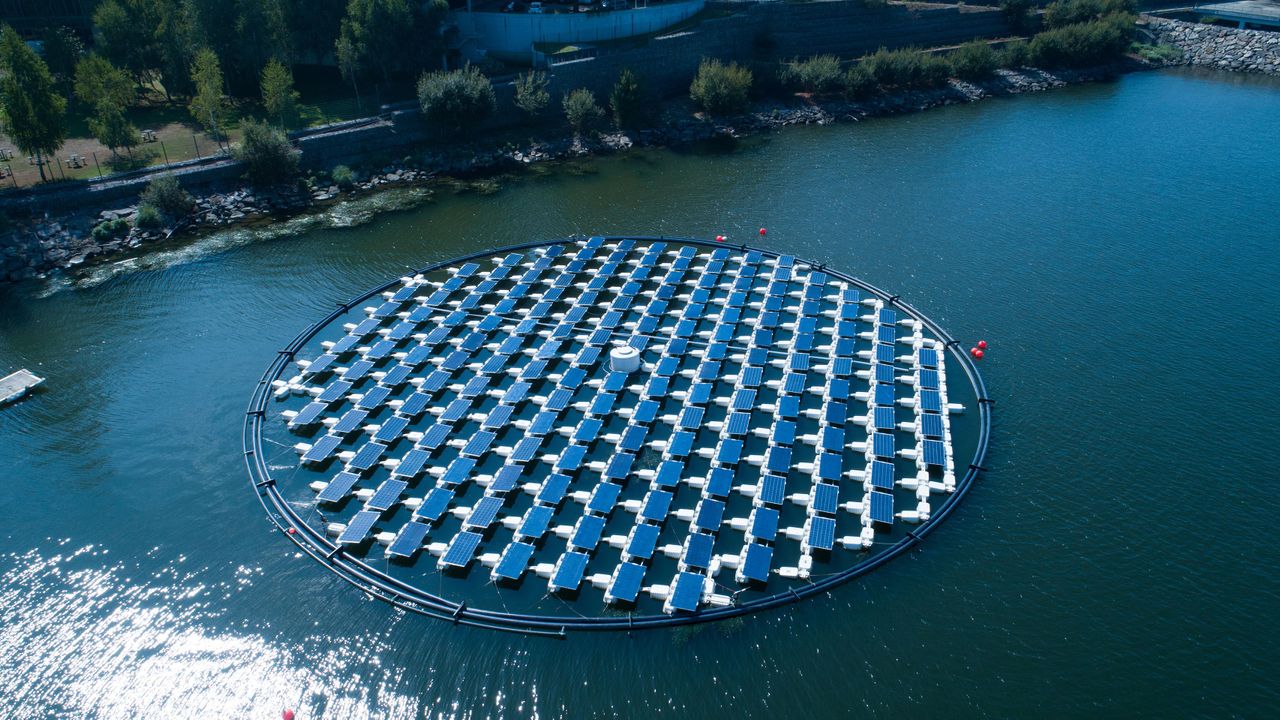
Week of October 30 – November 3
Ben and I are both out of pocket this week, so to keep things going I’ve collected a set of four nifty trend news nuggets for you to check out.
Story 1: This New 108-Foot Hybrid Sailing Yacht Can Generate Its Own Electricity at Sea
Source: The Robb Report Story by Rachel Cormack
Link: https://robbreport.com/motors/marine/southern-wind-hybrid-sailing-yacht-1234737985/


- Christened Gelliceaux, the 108-footer is the first hull in the SW108 series to leave the South African shipyard. The hybrid cruiser departed Cape Town in late October to embark on a voyage around the world.
- Described as a “smart custom” sailing yacht, the SW108 strikes a perfect balance between sustainability, efficiency, and luxury. Penned in collaboration with Nauta Design and Farr Yacht Design, the vessel is based on a versatile platform that can be tailored to meet each seafarer’s wants and needs. Gelliceaux’s owners, for instance, opted for a deeper keel, a higher sail plan, and more sail area than the original model.
- Gelliceaux is equipped with a diesel-electric propulsion system that was designed in collaboration with BAE Systems. Comprising two highly efficient generators, a high-voltage lithium battery bank, and electric motors, this setup ensures a more efficient consumption of fuel while lowering carbon emissions. The newcomer also has hydrogenerating capabilities, meaning that it can produce electricity at sea to recharge the battery. As a result, the owner can cruise sans noise and pollution for longer periods.
- “This yacht is a genuine marvel of sustainable sailing, capable of generating an impressive 35 kW while sailing at 16 knots and 25 kW while gliding at 14 knots,” adds Southern Wind’s technical manager Yann Dabbadie. “When sailing at a speed of 10 knots or higher, Gelliceaux could virtually extend her range indefinitely while retaining all the luxurious amenities on board.”

Story 2: This electric plane’s 2,000-mile journey is over. Now its Air Force tests begin
Source: Popular Science Story by Rob Verger


- On Wednesday, October 18, an electric aircraft powered by a single propeller flew into, and then out of, Joint Base Andrews, the military facility famous for hosting Air Force One. That planned stop at the Maryland base was part of a long journey from Vermont to Florida.
- Today [October 26], the aircraft, created by Vermont-based Beta Technologies, finally arrived in Florida, touching down at Duke Field airport, which is part of Eglin Air Force Base. The reason for the long trip from north to south is for Beta to give the US Air Force a chance to test the battery-powered aircraft and see how it handles tasks like moving cargo.
- The testing the Air Force carries out will involve gathering “both ground and flight data,” says Maj. Riley Livermore, the flight commander for the 413th Flight Test Squadron. The exercises will involve “flying from point A to point B,” testing the plane at “different speeds,” simulating “different payloads,” and in general “seeing how the aircraft performs.” During these tests the aircraft will be crewed, meaning that it will be flown by a pilot who is on board the plane. The accouterments at Duke Field also include a Beta-installed charger to give the aircraft the juice it needs.

Story 3: Company designs genius ‘island’ of floating solar panels that maximize energy by following the sun — here’s how it works
Source: The Cool Down Story by Wes Stenzel
Link: https://www.thecooldown.com/green-tech/proteus-solar-panel/

- SolarisFloat, a Portuguese company, has created a floating system of solar panels that move with the sun.
- According to Interesting Engineering, the new system is essentially a floating “island” with electric engines and different axis designs that allow it to maximize its efficiency when absorbing the sun’s rays.
- According to the BBC, the Protevs (as SolarisFloat spells the device’s name) was installed in the Dutch lake Oostvoornse Meer and has 180 moving panels that combine for a total of 73 kilowatts of peak power. The panels are also double-sided.
- The Protevs+ takes up 15,543 square feet, with a diameter of about 125 feet. The model’s panels move vertically with dual-axis tracking, according to Interesting Engineering. The Protevs Single360 only has a single axis but has 360 modules that combine for a kilowatt peak of 147.
- SolarisFloat claims that the shadows created by the floating system on the lake also reduce the evaporation of the lake’s water by 60% and cut down on the amount of algae in the lake, which would have a positive effect on the water quality.

Story 4: In a First, Scientists Fully Wipe a Cell’s Memory Before Turning It Into a Stem Cell
Source: Science Alert Story by Clare Watson

- Scientists already have their ways of coaxing human cells into new forms, using a special concoction of chemicals to nudge humble skin cells into malleable tissues known as induced pluripotent stem cells.
- In spite of this new lease on life, these particular cells still retain a few genetic reminders of their time as a fully developed tissue, affecting their use as a blank slate.
- Now an international team of researchers has gone one better: finding a new way of wiping a cell’s memory clean so it can be better reprogrammed as a stem cell.
- This might all sound like some molecular wizardry, but induced pluripotent stem cells ( iPSCs) as they’re known have been used in medical research to model diseases and develop therapies since 2006.
- Their discovery, by a pair of Japanese scientists, opened up a new realm of regenerative medicine, whereby embryonic-like stem cells could be engineered from ordinary human adult cells using a set of reprogramming factors.
- The promise of iPSCs is immense: because they can propagate indefinitely and give rise to every other cell type in the body, iPSCs are not only incredibly useful tools for studying diseases. They are also shaping up as a stepping stone to individualized cell-based therapies, which could replace damaged or diseased tissues.

